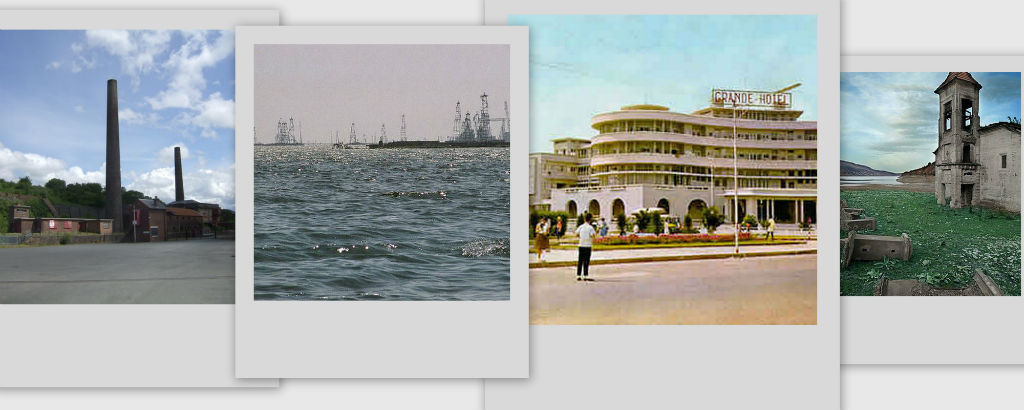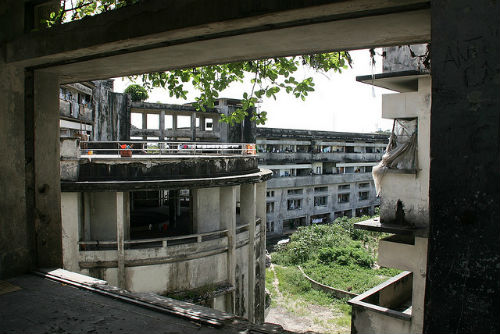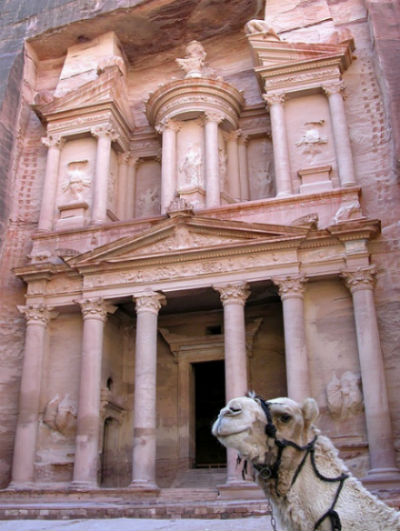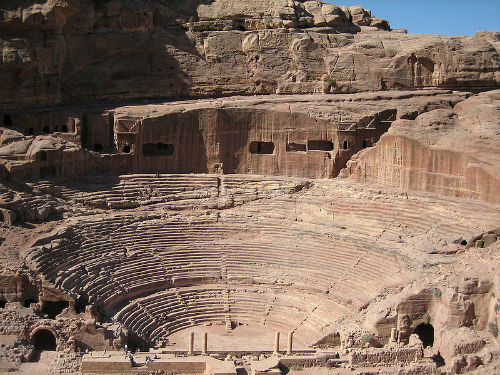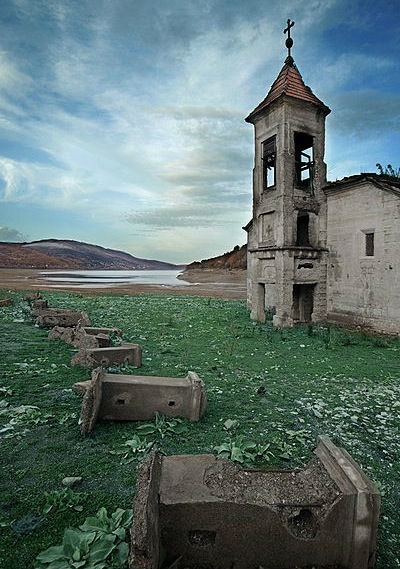Another installment in our series on abandoned places in the world.
1. Neft Daslari (Oil City), Caspian Sea
I’ve seen the future and it’s not pretty. Azerbaijan’s Neft Daslari (aka Oil Rocks) was a Stalinist mega-project to provide the Soviet Union with oil following WW2. Approximately 45km offshore of the Caspian Sea, the floating city was built in several phases starting in 1951. The network of 2,000 interconnected platforms and 200km of roads (built on 17,650,000 cu ft of landfill) were created to support the 600 separate wells operating on Neft Daslari. With a workforce of over 5,000, oil extraction continued well into the 1970s. Today, two-thirds of the infrastructure is under water.
 Meet me by the bridge. No, not that one.
Meet me by the bridge. No, not that one.
2. Grande Hotel, Beira, Mozambique
Once billed as the “Pride of Africa,” the luxurious 350-room Grande Hotel opened in 1954 in the former Portuguese colony of Mozambique. Never being able to attract a wealthy clientele, the hotel was closed in 1963 and subsequently served as a conference centre and swimming pool until the 1970s. With the advent of the Mozambican Civil War (1977-1992), the hotel was inhabited by the general population (mostly refugees), and continues to serve as home to approximately 2,000 to 3,000 people. Filmmaker Lotte Stoops recently completed a documentary on the hotel and the trailer can be viewed here.
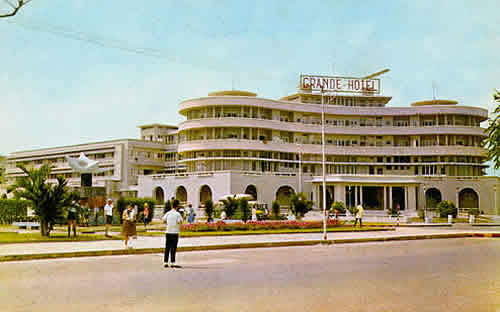 I may or may not have been hit by a car a few moments after this photograph was taken.
I may or may not have been hit by a car a few moments after this photograph was taken.
3. Dunaskin Iron Work, Ayrshire, Scotland
Founded by Glasgow cotton mill owner, Henry Houldsworth, in 1847, the Victorian-style Dunaskin Iron Work company produced coal and, later, bricks, up until 1976. By the late 1990s, a heritage centre was developed on site, but was closed in 2005 due to lack of funding.
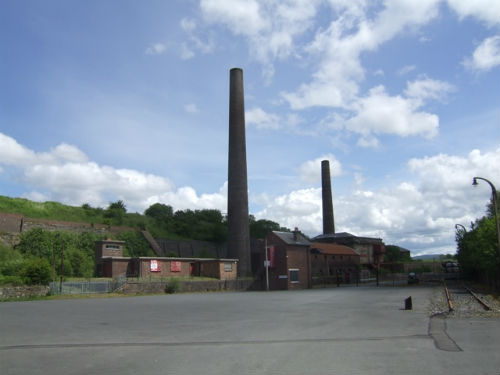 And then the turtle said to the scorpion.…Dammit, chimney #2, are you even listening to me?
And then the turtle said to the scorpion.…Dammit, chimney #2, are you even listening to me?
4. Petra, Ma’an, Jordan
Petra was once the capital city of the Nabataean Kingdom. Serving primarily as a trading centre from the Red Sea to the Mediterranean, Petra was annexed by the Emperor Trajan for the Roman Empire in 106AD. A series of powerful earthquakes in 363AD destroyed half of the city and by 700AD, records and references to Petra had become increasingly scarce. “Rediscovered” in 1812 by Johan Ludwig Burckhardt, the city remains a popular tourist attraction and was designated a UNESCO World Heritage Site in 1985. Many thanks to THurdler for this recommendation.
5. St. Nicholas Church, Mavrovo Lake, Macedonia
Located in the resort village of Mavrovo in western Macedonia, the Church of St. Nicholas was built in 1850. During the construction of a hydroelectric power plant in 1953, waters from the Radika River were redirected into the artificial lake of Mavrovo, resulting in the church’s complete submersion. Since then, the Church of St. Nicholas reemerges during the dry season.
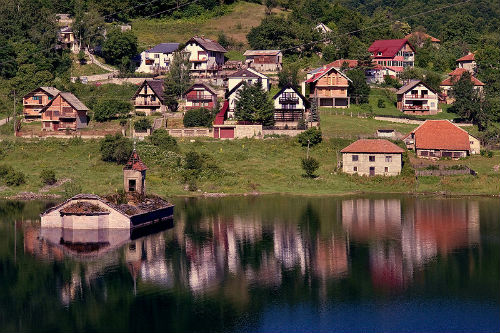 Oh, hey, just coming up for air. He did WHAT with WHOM?!
Oh, hey, just coming up for air. He did WHAT with WHOM?!
For previous entries, please click here.
(Images c/o 1, 2, 3, 4, 5 = Dunaskin Iron Works (John M) / CC BY-SA 2.0, 6, 7, 8, 9)
